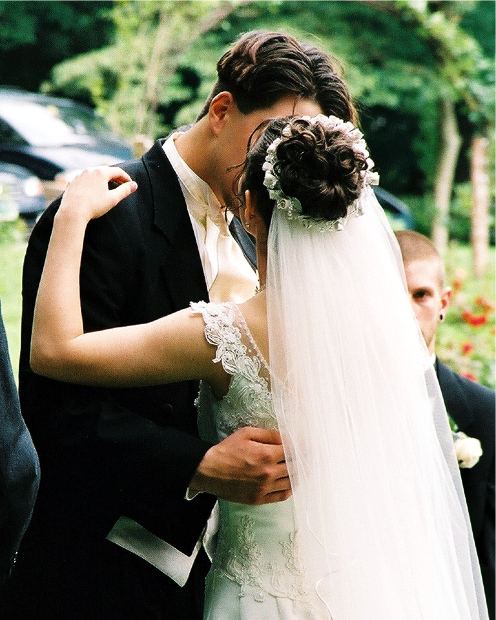You will need
- You will need:
- - tulle, organza, or tulle;
- - scissors;
- - threads;
- - sewing machine or needle;
- - a barrette or comb for attaching veils to hair;
- - rhinestones, lace, satin ribbon, beads.
Instruction
1
Before you start sewing the veil, you need to decide on her appearance. One of the important parameters is the length of wedding veils. The most popular choices include: wedding veil shoulder length (60cm) to cubits (75-80cm), to the fingertips (110cm) veil with a long train (2 meters). In addition, you need to decide how fluffy and thick you want to see your veil: keep in mind that if the veil will cover the face before the first kiss, it is better to abandon many folds on her to the photos was to be seen the bride's face, and not white cloud tissue. If veil should fall on the shoulders and back, she can be as curvy.
2
Decide in advance how you will handle edge wedding veil. You may trim it with satin binding or lace or sew the braid with rhinestones or pearls. Consider also whether to complement a veil embellishment – embroidery or small beads. The decor and finishing veil must be in harmony with the wedding dress or the bride's adornments.
3
When you decide the model and sketched a rough sketch, you can move on to measuring and cutting fabric. Often when creating wedding veils as the patterns use oval or rectangle with rounded edges, sometimes square.
4
As for the size of a veil, the length need to measure from the head to the place where the veil should end, the result is double. Width of veil depends on its intended thickness, but in any case will be at least 180cm.
5
Lay the fabric on a large table or on the floor. Fold it in half lengthways and then again across the line. You get a four-layer rectangle of fabric. Take the scissors and zakruglenie free corner of the fabric, before cementing the layers together and defining a cut line. When you expand a title, you will see that you get a rectangle with rounded edges.
6
Now you need to give the veil a form. To do this, fold the fabric across the middle or make one end of the fabric a little longer than the other to give the veil a layered look. Try on a veil by attaching it to the head if it turns out longer than you would like, cut off the excess, making a rounded edge to the cut.
7
The next stage is the Assembly of a veil. You need a needle and thread to gather the fabric along the fold in numerous folds. If you sew a thick veil, the fabric structure across the entire width. If you plan to make a Bridal veil not magnificent, assemble on the thread only the middle part of the fabric on the fold. As a result, you should obtain a plot of the collected tissue about 5cm in length.
8
Sew the veil to a hairpin or comb, by which it will be attached to the hair. As attachment you can use headband or tiara. Now you can try the product and start decorating wedding veils and developing the bottom edge.
9
Sew the trim to the bottom edge wedding veils and decorative items both manually and with a sewing machine. To do this, use a thin thread and try to do the work carefully and thoroughly.
10
Your veil is ready. Maybe now it's not just a wedding accessory and a future family heirloom that you can pass on someday to your daughter or daughter-in-law.
